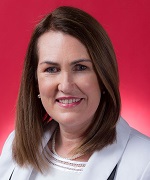The need to redefine personal and general advice, and the risks posed by vertically integrated businesses were among the issues debated before a Parliamentary Committee last week.

As part of its inquiry into education and standards for financial advisers, the Parliamentary Joint Committee (PJC) on Corporations and Financial Services conducted two public hearings last week, meeting with a cross-section of financial services stakeholders. While the main focus of the inquiry is to report on proposals to lift the professional, ethical and education standards in financial advice, the Committee questioned industry representatives about issues arising from businesses that provide both financial products and financial advice.
During discussions with the Self-Managed Super Professionals Association of Australia (SPAA), PJC Deputy Chair, Senator Deborah O’Neill, asked whether it was fair to say there was still some confusion in the market about the difference between general advice, product advice and financial advice.
SPAA Senior Manager, Technical and Policy, Jordan George, agreed with the Senator, saying SPAA would like to see advice split into ‘personal advice’, delivered by a qualified professional financial adviser, and ‘product information’ or ‘sales information’, where the consumer clearly understands that the information does not take into account their personal circumstances.
Senator O’Neill responded with: “Yes, it is not quite 50 shades of grey; but three shades of grey still leads to confusion, doesn’t it?”
“We think two would be better,” answered Mr George.
Senator O’Neill then confirmed Mr George meant a clear, black and white definition: “’This is in your best interest’; ‘This might be in your sales person’s best interest’—nice and clear between the two.”
This was just one of a number of lines of questioning during the hearings that dealt with the definition of advice, and the impacts of vertically integrated financial product and advice businesses.
…it is not quite 50 shades of grey; but three shades of grey still leads to confusion, doesn’t it?
Later in the hearings, members of the Financial Services Union (FSU) were asked whether there was a public, common standard to be met by bank-based financial planners.
Fiona Jordan, FSU National Secretary, said in her experience there were usually a couple of levels of financial planners operating within the major banks, who received referrals from bank staff.
“If it was not in relation to them having ‘$x’ amounts to invest, they would go to a low-level planner. If it was in relation to where they have the capacity to invest, they would go to a senior planner…”
Senator O’Neill questioned whether it was clear to the consumer if they were being referred to a high-level or low-level planner. Ms Jordan said ‘no’.
Senator O’Neill then asked whether the customer will know if the planner is selling them exclusively bank-owned products.
“No, you will not,” said Ms Jordan.
“I will think I am getting the Rolls-Royce treatment after you have introduced me to this financial planner?” asked Senator O’Neill.
Mark Gepp, FSU National Manager Infrastructure and Political Relations, said: “The trigger for whether you go to a tier 2 financial planner, which is for general advice, or a tier 1 financial planner, who is more senior and experienced, will be how much wealth you have.”
“The wealthier I am, the more likely I am to get good advice?” asked Senator O’Neill.
“The wealthier you are, the more likely you are to go to a tier 1 adviser,” responded Mr Gepp.
The hearings, which were held in Melbourne and Sydney, included presentations from the Financial Planning Association (FPA), Association of Financial Advisers, Financial Services Council (FSC), Financial Services Union, and Industry Super Australia.



